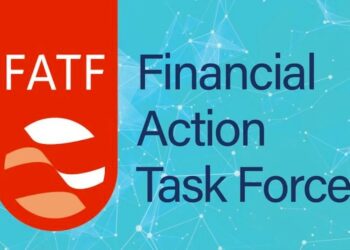In an effort to manage ongoing liquidity pressures in the foreign exchange (FX) market, the Central Bank of Nigeria (CBN) has reintroduced the Retail Dutch Auction System (RDAS). The move comes after a prolonged period of significant volatility and sustained demand pressure on the naira, the nation’s currency. The CBN initiated this step by selling $876.3 million to 26 qualified banks at a rate of N1,495 per dollar, marking the first use of RDAS since its discontinuation over a decade ago.
The RDAS was originally utilised by the CBN in 1987, 1990, and 2002-2006 as a mechanism for determining the exchange rate through a competitive bidding process. It allowed eligible customers, including banks and other authorised dealers, to participate in the auction by bidding for foreign currency at rates they were willing to pay. The system ensured that the lowest bids were filled first, and the marginal rate—the lowest rate at which all bids could be filled—became the official exchange rate for that auction.
The reintroduction of RDAS is seen as a strategic move by the CBN to alleviate the persistent demand pressures in the FX market and enhance the process of price discovery. By providing a more transparent and market-driven mechanism for determining the exchange rate, the CBN aims to curb the volatility that has plagued the market in recent months. This decision comes at a time when the naira has been under severe pressure, with significant fluctuations in its value against major currencies, particularly the US dollar.
According to the CBN, the decision to bring back RDAS is part of a broader strategy to stabilise the FX market and promote economic stability. A statement from the apex bank, signed by its Director of Financial Markets, Dr. Omolara Duke, explained the RDAS process in detail. “The Auction mechanism is predicated on the volume of forex available for sale. In addition, it is also to give forward guidance on the exchange rate that will promote forex market stability. The cutoff point of an Auction is the lowest exchange rate that clears the volume that is offered for the Auction,” the statement read.
The reintroduction of RDAS has generated a range of reactions from market analysts and stakeholders. Analysts at FBNQuest, a leading research firm, expressed optimism that the move could help reduce volatility in the FX market during the second half of 2024. “Given the improvements in FX inflows, the market may experience reduced volatility in H2’24. While this development could contribute to a more stable economic environment, the impact on import costs and inflation will depend on broader market conditions and policy responses,” the analysts noted.
However, not all analysts are equally optimistic. Experts at Afrinvest West Africa offered a more cautious outlook, raising concerns about the long-term sustainability of the RDAS and other measures recently introduced by the CBN. While they acknowledged that the reintroduction of RDAS could stabilise the forex market in the short term, they pointed out that several challenges remain.
“We are of the view that the apex bank does not possess the required financial war chest to meet the average forex demand for an extended period. Recall that Dr. Cardoso, during the last Monetary Policy Committee (MPC) meeting, stated that the country’s foreign reserves of $37.1 billion could cover 11 months’ imports. This implies a monthly average import spend of $3.3 billion. Regardless of the estimate considered, the FX reserves could run dry in six to nine months should the magnitude of the bids at the auction be met weekly and accretion rate does not offset outflows,” Afrinvest analysts warned.
In addition, they highlighted seasonal factors that could exacerbate demand pressures in the near future. “Seasonality trends suggest that forex demand for manufacturing imports, educational commitments, and summer travels peaks in Q3. Hence, we are of the view that the measure will only temper the demand pressure that is building up,” they concluded.
As the CBN navigates the complex terrain of forex market management, the reintroduction of RDAS is a significant step that underscores the central bank’s commitment to stabilising the naira. However, the effectiveness and sustainability of this approach will depend on a range of factors, including the availability of foreign reserves, the broader economic environment, and the policy responses that follow.





